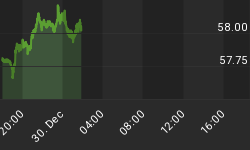The recent downturn in oil prices forced a slowdown in the U.S. shale industry, and top executives appear to be gloomier than ever.
According to a survey by the Dallas Federal Reserve, the business activity index in Texas fell to -0.6 in the second quarter, down from a positive reading of 10.8 in the first quarter. A negative reading means that business activity actually contracted from the prior quarter, offering evidence that the slide in oil prices led to a pullback in spending and drilling.
While oil and gas production continued to rise in the second quarter, it did so at a slower pace than in months past. The Dallas Fed said that its spending index actually fell into negative territory, again, an indication of contraction.
A slowdown in drilling is felt most acutely by oilfield services companies, who make their money from drilling volume and activity, rather than from oil sales. Not only did activity dip, but the prices that oilfield services charge for their services fell sharply, and margins were “notably lower” in the second quarter, the Dallas Fed said.
Employment and wages also contracted. The Dallas Fed offers indices on “company outlook,” indices that further highlight the rising pessimism among most firms. The “aggregate uncertainty index” showed a surge of uncertainty from the sector, and it posted the highest reading since 2017.
In short, conditions appeared to have deteriorated in the second quarter, even as the industry posted a “gusher of red ink” in the first.
While the indices offer some quantitative data to back up the souring outlook for U.S. shale, the metrics are also a bit high-level and abstract. The real color comes in the comments section of the Dallas Fed survey, where comments are anonymously submitted by oil and gas executives. These statements offer better clues into what’s really going on at the ground level.
For instance, one executive said that the oil price downturn in the second quarter has had a dramatic effect on industry conditions. The “biggest impact has been the rapid and accelerating lack of investor interest in both conventional and unconventional oil and gas. The securities of oil and gas companies now sell at a fraction of what they once commanded. Huge losses in these shares hamper new exploration. It looks like another round of bankruptcies and mergers,” the executive said.
There were countless others that offered similar sentiments. “It is very true that cash is drying up, and it is going to be hard to get financing to drill our wells,” one person wrote. Related: The Mining Industry Is Staging A Comeback
Meanwhile, the tidal wave of new natural gas supply crashed prices in West Texas last year, and Waha prices have at times fallen into negative territory. Flaring has spiked as a result of a lack of pipelines. Conventional wisdom says weak gas prices barely impact drillers because companies are really targeting oil. But apparently not everyone is immune to rock-bottom gas prices. “We had to shut-in a large natural gas field due to Waha Hub negative pricing,” one company executive said in the Dallas Fed survey.
Yet another called for “a conversation” about government regulation, perhaps mirroring the mandatory production cuts seen in Alberta this year. “We need to start a conversation between industry and government about bringing back pro-rationing (daily production allowables and monthly market factors) again. Nobody’s generating free cash flow,” the comment said.
Notably, a few outside forces are also having a negative impact on Permian drillers. One person said that “tariffs are raising prices of steel and other services and are a disastrous tool of the current regime in Washington,” while another person said that the increase in interest rates from the U.S. Federal Reserve was “cutting cash-flows.” Another voiced concerns about rising uncertainty due to the U.S. presidential election.
The only positive for the sector as of late is that oil prices have rebounded, with WTI moving back to the high-$50s per barrel on the back of Middle East tension and a sudden decline in inventories. Still, the shale sector was unprofitable at roughly those levels in the first quarter, and by all accounts, drillers continue to burn through cash. In fact, according to Rystad Energy, the return on investment from oil and gas wells in the Permian peaked in 2017.
The OPEC+ extension is likely in the bag, but that may only put a floor beneath prices, rather than leading to a more significant rally. With weak demand and supply continuing to rise, albeit at a slower rate, there is little reason for shale executives to feel optimistic.
By Nick Cunningham of Oilprice.com
More Top Reads From Safehaven.com:

















